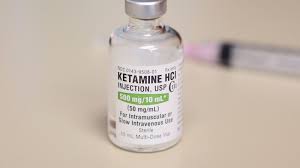Blog
Ketamine Crystals Liquid

Ketamine Crystals Liquid, Ketamine is a powerful anesthetic widely used in medical settings and increasingly studied for its potential in mental health treatment. It exists in several forms, with “ketamine crystals” and “ketamine liquid” being two of the most common. This article explores the differences between these forms, their uses, and the risks associated with their misuse.
What is Ketamine?
Ketamine is a dissociative anesthetic first developed in the 1960s. It is listed on the World Health Organization’s Essential Medicines list due to its effectiveness in anesthesia, especially in emergency or battlefield situations. It works primarily by blocking the NMDA receptor in the brain, resulting in both anesthesia and altered perceptions of reality.
Ketamine Crystals: Characteristics and Uses
Ketamine crystals are the pure, solid form of the substance. These white or translucent crystals can be ground into a fine powder. In clinical and research environments, this form is used to create custom formulations or is further processed into pharmaceutical-grade medications.
However, in the illicit market, ketamine crystals are often sold for recreational use. They are typically consumed by:
-
Snorting (insufflation): Ground crystals are inhaled for rapid onset.
-
Oral ingestion: Though less common due to delayed effects.
-
Dissolving in liquid: Sometimes used to convert crystals back into ketamine liquid for injection.
Ketamine Liquid: Medical and Clinical Use
Ketamine liquid is the injectable form of the drug and is the most commonly used version in hospitals and veterinary clinics. It comes in various concentrations and is administered:
-
Intravenously (IV) or intramuscularly (IM) for anesthesia and pain management.
-
In low doses in clinical trials or ketamine clinics for treating depression, PTSD, and other mental health disorders.
This liquid form ensures precision in dosing and is preferred in controlled medical environments.
Medical vs. Recreational Use
Medically, both ketamine crystals and ketamine liquid are used under strict supervision to treat conditions ranging from chronic pain to treatment-resistant depression. Their growing use in mental health care is backed by scientific studies showing that low doses can lead to rapid improvement in symptoms.
Recreationally, however, ketamine is often abused for its hallucinogenic and dissociative effects. This can lead to:
-
Short-term effects: Confusion, dizziness, hallucinations, and impaired motor function.
-
Long-term risks: Bladder damage (ketamine bladder syndrome), memory impairment, and dependency.
Legal and Safety Considerations
Ketamine is a controlled substance in many countries. Possession, distribution, or use outside of a licensed medical setting is illegal and potentially dangerous. Whether in the form of ketamine crystals or ketamine liquid, unregulated use carries significant health and legal risks.
Conclusion
Understanding the differences between ketamine crystals and ketamine liquid is important for both medical professionals and the general public. While ketamine has legitimate, even life-saving uses in anesthesia and mental health treatment, its misuse—especially in non-medical settings—poses serious health and legal risks. Anyone considering ketamine for therapeutic purposes should always consult with a qualified medical professional and only use it within regulated treatment frameworks.
You Might Also Like These:
